
Forests in Our Changing World
New Principles for Conservation and Management
224 pages
6 x 9
16 illustrations

224 pages
6 x 9
16 illustrations
Scientists tell us that climate change is upon us and the physical world is changing quickly with important implications for biodiversity and human well-being. Forests cover vast regions of the globe and serve as a first line of defense against the worst effects of climate change, but only if we keep them healthy and resilient.
Forests in Our Changing World tells us how to do that. Authors Joe Landsberg and Richard Waring present an overview of forests around the globe, describing basic precepts of forest ecology and physiology and how forests will change as earth’s climate warms. Drawing on years of research and teaching, they discuss the values and uses of both natural and plantation-based forests. In easy-to-understand terms, they describe the ecosystem services forests provide, such as clean water and wildlife habitat, present economic concepts important to the management and policy decisions that affect forests, and introduce the use of growth-and-yield models and remote-sensing technology that provide the data behind those decisions.
This book is a useful guide for undergraduates as well as managers, administrators, and policy makers in environmental organizations and government agencies looking for a clear overview of basic forest processes and pragmatic suggestions for protecting the health of forests.
"Forests in Our Changing World provides an insight and sobering look at the status of our forests. Forestry professionals, land managers, naturalists, ecologists, and students of these subjects will appreciate this work."
Wildlife Activist
"In just seven chapters this readable book presents an overview of the whole gamut of forestry and forest-related activities today and looks to the future in a changing world."
BC Forest Professional
"The book offers much food for thought regarding the future of these ecosystems."
Choice
"Forests in Our Changing World is a useful primer that will introduce students and the interested public to the field of forestry."
San Francisco Book Review
"A first-class introduction to current practices and emerging challenges in forestry."
EcoForestry
"Based on a deep knowledge of the physiology and ecology of forests, with a focus on the tensions between managing for their ecosystem service values and immediate economic values, this is an excellent, authoritative book on what is needed to maintain and use forests in a rapidly changing world."
Brian Walker, CSIRO, Australia
"Global forests provide wood, but also ecosystem services such as clean water, carbon storage, and biodiversity. Forests in Our Changing World explains the complex interactions between forests and their environment and highlights the risks of nonsustainable management."
Sune Linder, Professor Emeritus of Forest Ecology, Swedish University of Agricultural Sciences
"Two experienced researchers and teachers bring together a deep understanding of how forests work and a sobering look at their status in a rapidly changing world. Landsberg and Waring combine history, science, and clear thinking about the future in a book that will be a valuable addition to introductory classes at the college level."
John Aber, Professor, Environmental Science, University of New Hampshire
Preface
Acknowledgements
Chapter 1. Introduction: Looking Back and Into the Future
-Forests in Human History
-Resilience
-Outline of the Rest of the Book
-A Look into the Future
Chapter 2. Forest Types around the World
-The Main Forest Types
-On Being Evergreen or Deciduous
-Boreal Forests
-Temperate Forests
-Tropical Forests
-Plantations and Managed Forests
-Summary
Chapter 3. Weather and Climate Determine Forest Growth and Type
-How Trees Grow
-Weather Factors: Temperature
-Weather Factors: Solar Radiation
-Weather Factors: Air Humidity
-Weather Factors: Precipitation and Hydrology
-Implications of Forest Clearance for Hydrology and Climate
-Summary
Chapter 4. The Causes and Consequences of Rapid Climate Change
-The Causes of Global Warming
-Fossil Fuel Burning and Land Use Change
-How Fast Is the Earth Warming?
-A Word about Denialists
-On Variation and Uncertainty
-Extreme Weather Events
-TheImpacts and Implications of Climate Change
-Summary
Chapter 5. How We Value and Use Forests
-Ecosystem Services and Universal Values of Forests
-The Uses of Forests
-Abuses of Forests
-Summary
Chapter 6. The Economics and Practices of Forest Management
-An Outline of Relevant Economic Theory
-Microeconomics: Commercial Operations on State Land
-Microeconomics: Commercial Operations on Private Land
-Forest Growth and Yield Estimates
-Fire and Its Management
-Summary
Chapter 7. The Future for Forests
-Conserve the Forests
-Management for the Future: Natural Forests
-Management for the Future: Plantations
-Concluding Remarks
Endnotes
Glossary
References
Download PowerPoint files for your course here (11mb zipped file).
Most people now accept that the world’s climate is changing rapidly as a result of human activities — mainly the direct emissions of carbon dioxide and other gases that trap heat radiating from the earth, causing the temperature of our small blue planet to rise. This is leading to all sorts of political, economic and ecological problems.
The effects of climate change caused by rising global temperatures are increasingly well documented, and we know what we need to do to slow the process (halting it is, unfortunately, impossible in the foreseeable future) enough to give us, and the world’s ecosystems, time to adapt to it. The actions needed involve difficult decisions and changes that will affect our social and economic systems. The whole business is made more difficult by the fact that there are people — and politicians seem to be well represented in this group — who do not accept the reality of climate change.
Things are changing in this respect. Around the world there is widespread acceptance that climate change is real and serious, and of the fact that human activities are responsible for the speed at which it’s happening. However, we have just seen the election as (prospective) president of the United States, of a man who says climate change is a hoax, so it’s clear that the battle to convince as many people as possible of the reality and seriousness of the problem must go on. It seems that the best political outcome would be to persuade governments to tax carbon emissions. This would have all sorts of benefits for the economies of the countries that do it, as well as being the most effective measure anyone has thought of to check, and reduce, emissions while speeding the switch to more sustainable energy sources.
The concept of global warming was created by and for the Chinese in order to make U.S. manufacturing non-competitive.
— Donald J. Trump (@realDonaldTrump) November 6, 2012
The economic and ecological problems created by climate change include rising sea levels, more frequent and severe droughts, affecting food production in some parts of the world, and more frequent severe weather – storms, floods and heat waves. Natural ecosystems such as forests are subject to increasingly frequent disease and insect attacks as well as severe fires. But, besides being strongly affected by climate change, forests have an important role in mitigating it.
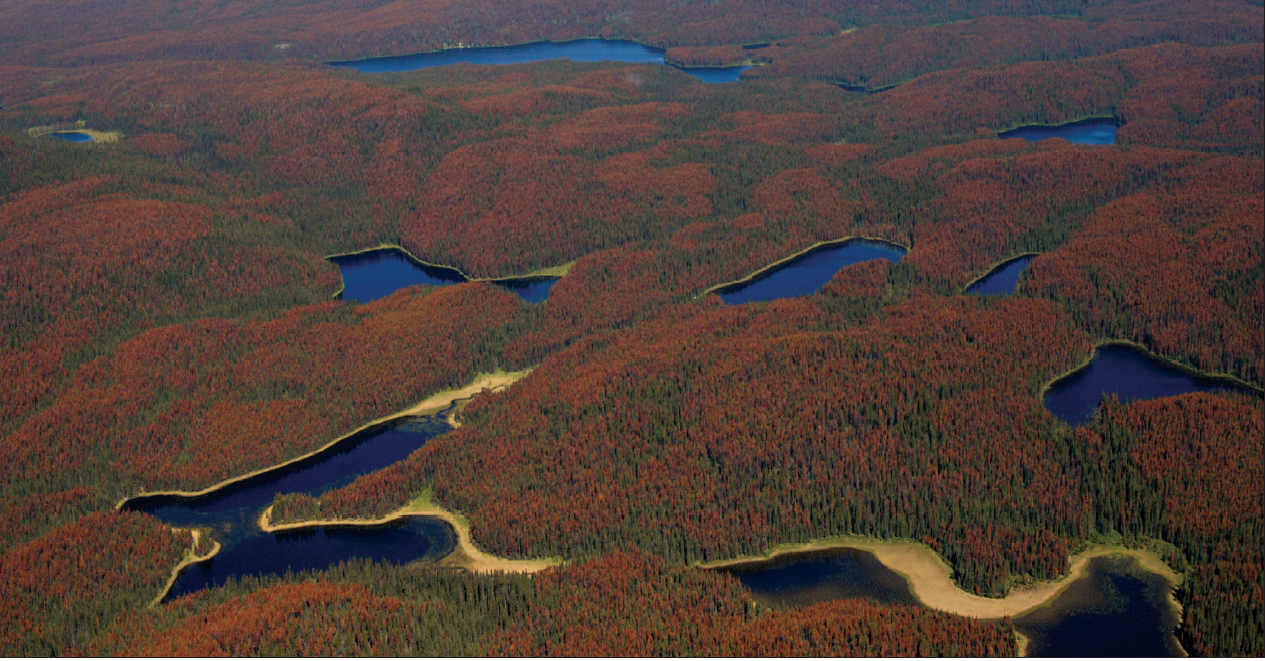
As scientists we have long been concerned with the general health and productivity of forests, with how to manage them to deal with the impacts of climate change and how forest management can help mitigate the problem.
Forests are huge sponges (or sinks) for carbon dioxide. Trees grow by absorbing CO2 and using the sun’s energy to turn the gas into carbohydrates—wood.
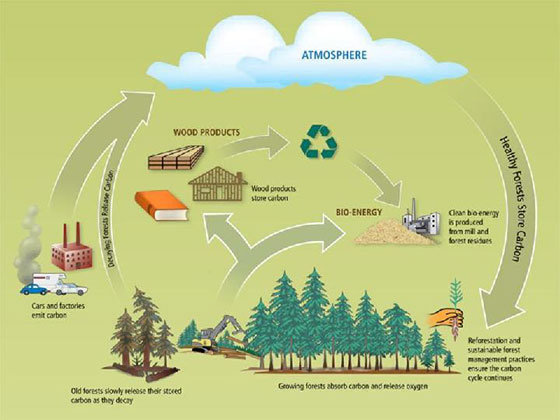
It has been estimated that forests fix, annually, about 60% of the emissions from fossil fuel burning and cement making — the latter a very large source of CO2. Young, actively-growing forests fix more CO2 than mature forests (although mature forests store more carbon). The bad news is that almost all the carbon fixed annually by forests is returned to the atmosphere by deforestation and burning. These statistics tell us that any management practice which increases (or just sustains) the growth rate of forests increases the amount of CO2 they take out of the atmosphere each year, while reducing deforestation rates will reduce the rate of accumulation of CO2 in the atmosphere.
We mentioned earlier that climate change is making some forests more susceptible to disease and insect attack. Trees stressed by high temperatures and drought are less resistant to such attacks than healthy, unstressed trees. If a high proportion of the trees in a stand are killed, the stand becomes nothing more than a fire-storm waiting to happen. In the past year, across the western US, in Australia and Canada and Europe, these firestorms have happened quite frequently, with massive impacts on people and economies as well as regional ecosystems.
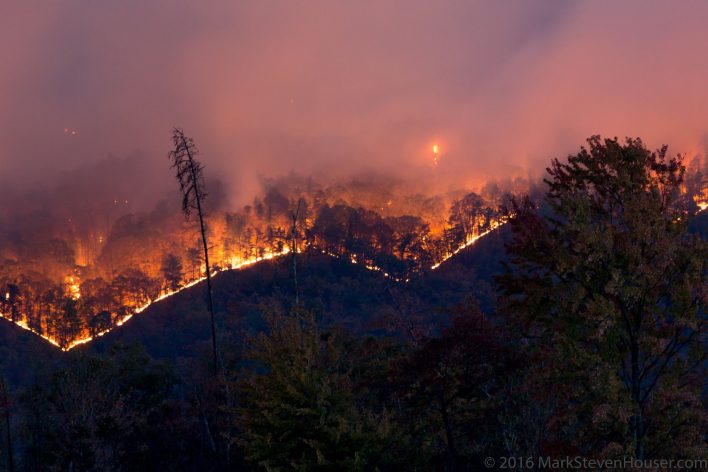
We can’t do anything about the high temperatures and droughts in particular areas, but forest management practices such as thinning which, in effect, makes more of the water in the soil available to the remaining trees, help keep stands vigorous and healthy and more resistant to disease and insect attack. Prescribed ‘cool’ burns, carried out when the forests are not dry enough for the fires to explode into out-of-control wildfires, offer another approach.
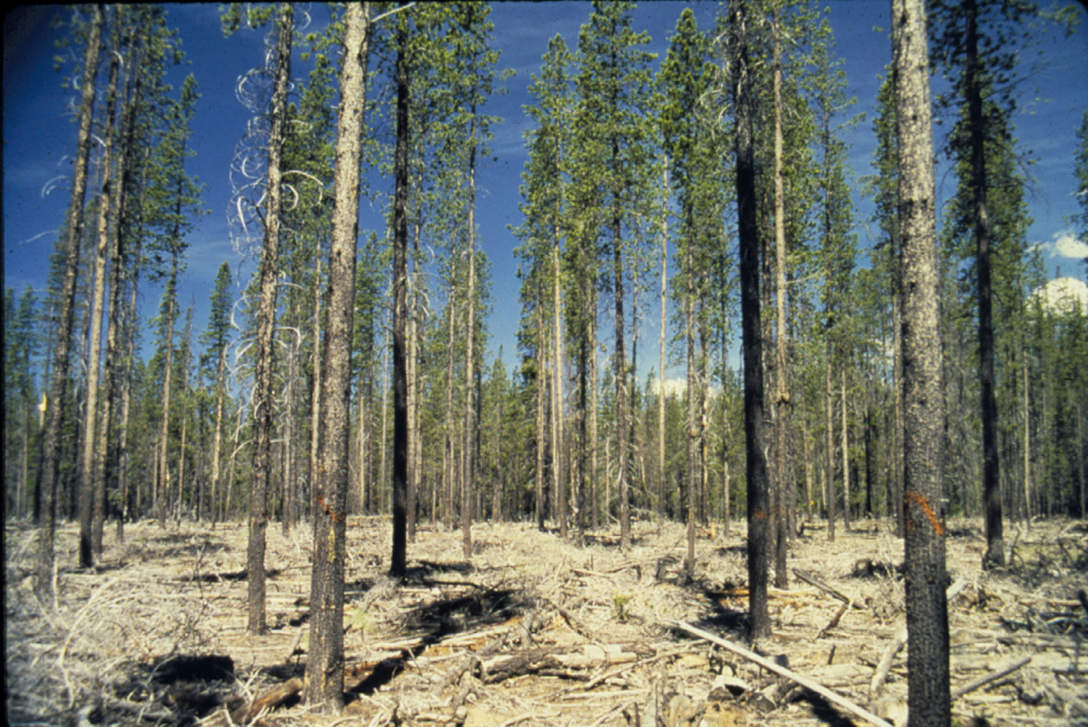
We have remote sensing tools, now, that allow us to monitor forests from space. We can detect and quantify the illegal logging, rampant in many parts of South America, in Indonesia and other Asian countries, and so bring pressure on those countries to curb the practice. We have developed models that use observations made by satellites, with weather data and information about soils, to predict forest growth and rates of carbon sequestration, by forests around the world. Models are also available that can predict when and where forests are most susceptible to fire, insects, and disease. We can use these, with data acquired from satellites, to assess the effectiveness of global management and plan how to improve it.
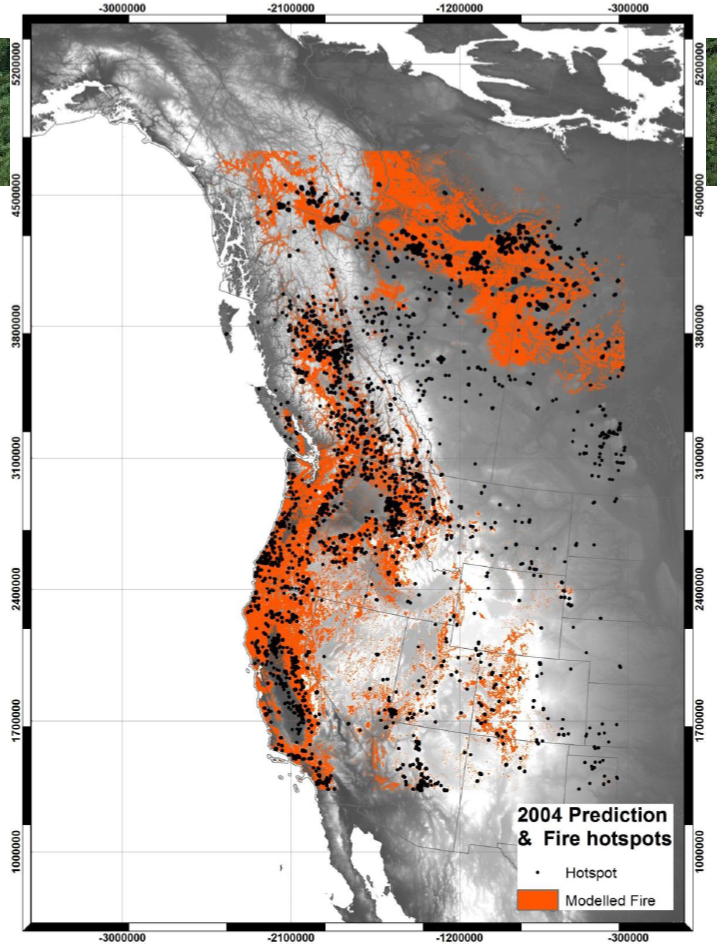
It may be that the battle against climate change cannot be won— at least, it seems unlikely that hopes for keeping average temperature changes to 2oC or less will be realized. That being the case, as well as continued efforts to restrain and reduce our carbon emissions, we have to learn to manage the situation in which the world finds itself. Resilience — the capacity to bounce back, to recover or to find a new acceptable route — has to be the operative word. For a resilient world we need very large areas of healthy forests.
For a long time we ecologists thought that we could predict not only how forests would grow but also how their composition was likely to change over time. And we could predict the effects of management actions: for example, If we chose to thin stands of trees in certain ways, we would expect predictable increases in the growth of the remaining trees, with more shrubs, grasses, and seedlings colonizing the gaps below the trees.
But those old expectations no longer apply. Changes in climate are making the growth patterns of forests in particular areas different from those they followed in the past. And the changes mean that established forests are less well adapted to their home range than they used to be. As a case in point, the rate of climatic warming is so rapid that ponderosa pine trees on the Canadian border will need to sprout legs to enable them to move north 60 miles a decade to keep up with climatic conditions to which they are adapted. That’s not going to happen, with or without a climate change denier in the White House.
Another surprise is that, where we might expect warming to increase the growth rates of subalpine forests, these forests are dying as they have become more vulnerable to insect and disease outbreaks, as well as to wildfires. Subalpine forests are squeezed between the more temperate species encroaching from below and barriers of rocky, infertile soils, or no land at all to migrate to, at higher elevations. Even more shocking, large trees have become more susceptible to climate change where they were once more resilient than smaller trees with less developed root systems.
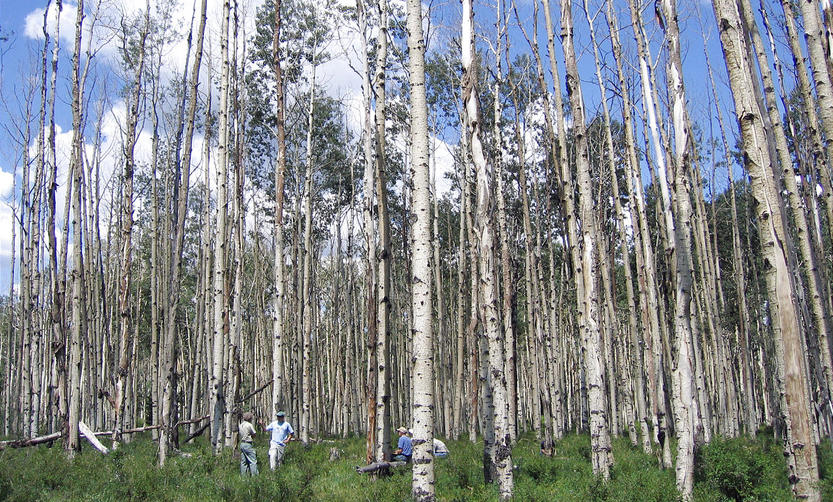
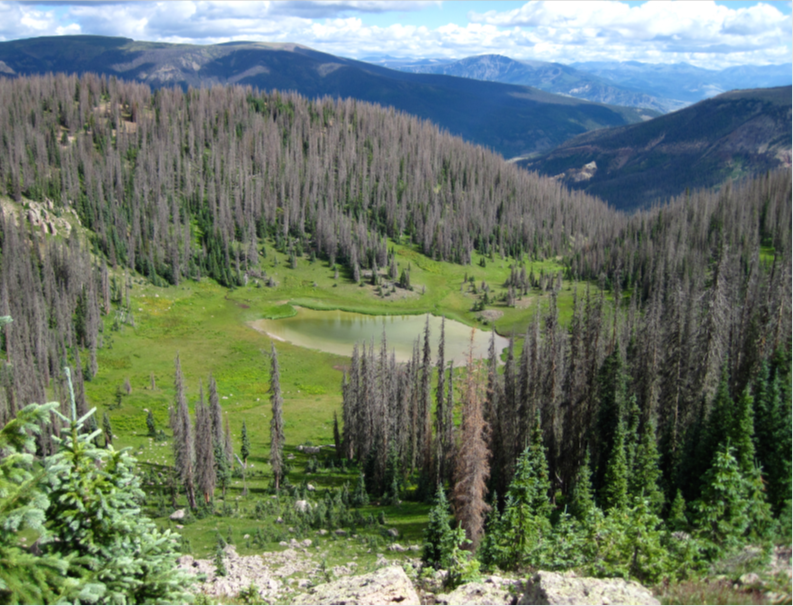
What can we do to mitigate the effects of climate change on forests, besides planting different species in new places? One action would be to maintain a mix of tree species that exhibit a range of tolerances to climatic conditions as well as to insects and diseases.

Alternatively, where only one species now dominates, as is the case in the ponderosa pine forests of southwestern United States, controlled fires can keep fuel from accumulating and reduce competition among the larger trees for water.
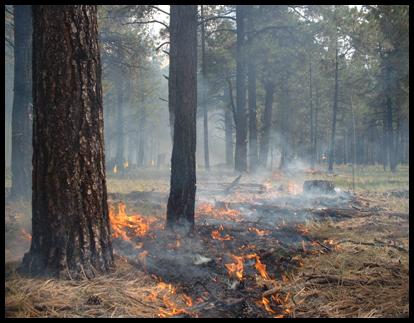
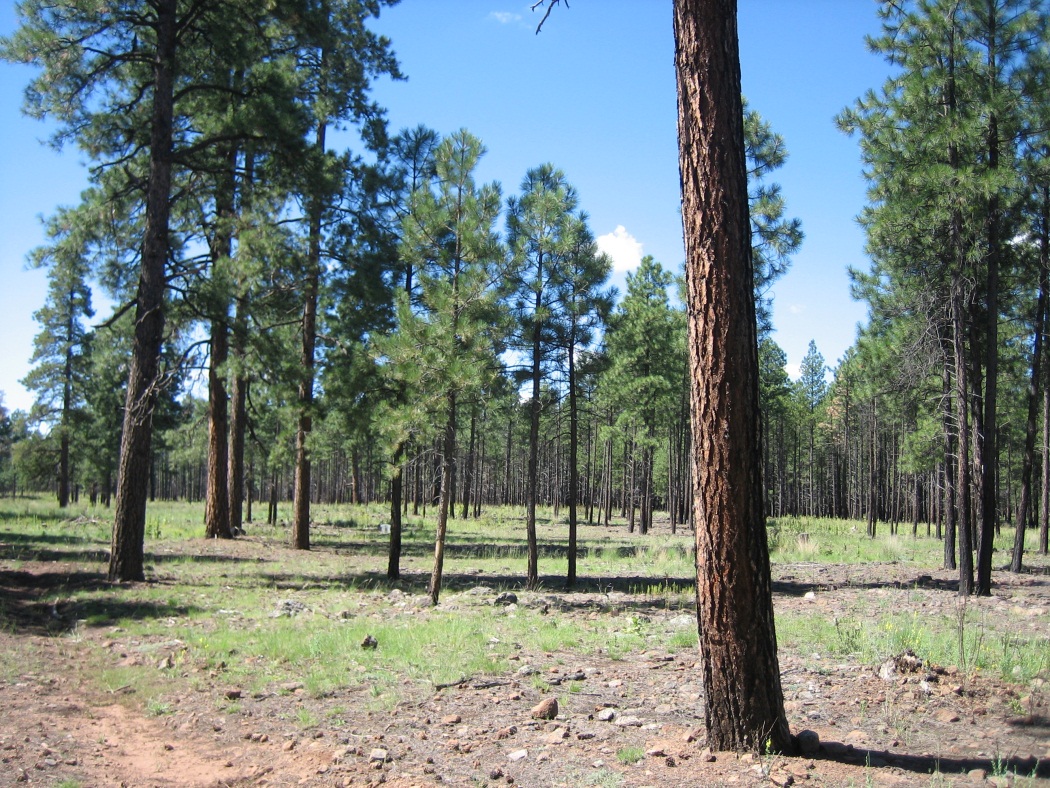
Among the most valuable tools we have to pin-point where forests are thriving and where they are dying are nearly 60 years of satellite monitoring by NASA and NOAA government agencies. These records provide a way to separate intentional removal of trees from those killed by wildfires, disease and insects. They also provide the most efficient way to monitor carbon sequestration policies and to verify model predictions.
Perhaps the greatest danger to the work of scientists studying climate change is the Trump administration’s stated goal of abolishing NASA entire Earth Science Division. That’s one threat every citizen interested in our future can do something about today to affect the world our children and grandchildren inherit. Do it!
International Day of Forests was on Tuesday, March 21. While reflecting on the day, we asked Joe Landsberg and Richard Waring, authors of Forests in Our Changing World, if days like these have any meaning. Here's what they had to say: "Most specially designated days, beyond religious and memorialm days, have little meaning for the vast majority of people.We have arbor day in this country that involves the supervised action of planting trees. That probably makes an impression on kids, who, as they age, can return to see their plantings grow, and encourage their kids to appreciate urban trees, if nothing else."
Forests in Our Changing World discusses how to keep forests healthy and resilient in the face of climate change. Check out the Introduction from the book below.
Do you think days like International Day of Forests matter? Comment why or why not below.
A new study from the Journal of Geophysical Research: Atmospheres suggests that naturally caused forest fires emit three times as much pollution as previously estimated. The pollution is in the form of particulate matter, which is one of the most dangerous forms of pollution. These measurements were compared to controlled forest fires intentionally set, and the findings showed that controlled fires produced less particulates.
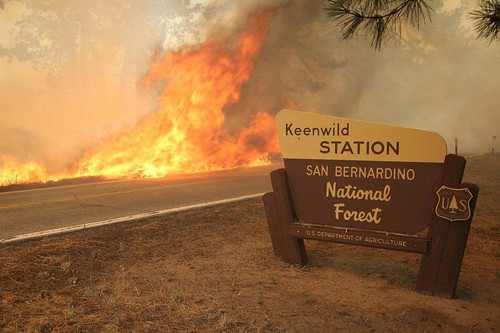
Richard Waring, Island Press author of Forests in our Changing World responded to the findings, saying: "The article that you provided the link to is sound, and no doubt representative of big 'campaign-type' fires in the western US and Canada where the dominant vegetation is primarily resinous conifers. I doubt the same amount of pollution would be generated by burning deciduous hardwood forests. Last year, my colleague Nicholas Coops and I published a paper focused on predicting wildfires in response to changing climatic conditions. In that publication, we recognized that the frequency of mega-fires is likely to increase as conditions continue to warm. The real solution is to cut pollution from burning fossil fuels, and to do so post-haste. Pollution from forest fires is a feed-back response, not the cause of the problem."

Most sane and sensible people accept the reality of human-induced climate change. Yet the Trump administration not only denies it, but is working to reduce actions that will help slow the process and mitigate its effects. The EPA, and other government-funded agencies are not even allowed to mention climate change.
Planting trees for—or, more accurately, against—Trump and his policies is a great idea. We know that it’s not going to solve the problem of climate change, although every tree helps a little, and if we plant enough trees they will have a significant effect. But, perhaps just as important in the short term, every little gesture against the awful Donald contributes to the tide of protest by millions of people saying “we will not accept the attitudes of this president and we will not go along with his agenda."
The contribution of trees and forests to the maintenance of a pleasant and livable global environment is well known and understood. However, as we know, forests around the world are under unprecedented pressure and are being destroyed at a horrifying rate. Clearance and illegal logging, particularly across southeast Asia, are rapidly reducing the area of tropical forests there. Brazil’s business-friendly government has recently proposed reducing the protected areas of the Amazon forests and has also announced plans to allow mining and development in protected areas. These activities will result in more clearance and forest degradation.

Clearing forests releases vast amounts of CO2 into the atmosphere, adding to the emissions from power generation, transport, factories, aircraft, and the rest, produced by modern human societies. Clearing also contributes directly to global warming because forests help reduce air temperature: when solar energy strikes green canopies much of it is used to evaporate water (transpiration from leaves), but when solar energy strikes bare surfaces those surfaeces become heated and the heat is transferred to the air, leading to more global warming. (This is what happens in cities, causing what’s known as the heat island effect.)
The droughts that are becoming more common and severe in some parts of the world are affecting forests directly, and also increasing the likelihood that they will burn. Across the western US huge areas of coniferous forests, dried out by drought associated with the changing climate, have burned this summer. All indicators suggest that droughts will continue and fire frequency will increase, raising the possibility that many of those forests will be destroyed in the not-too-distant future. They will not be able to regenerate after repeated burning.

In Portugal, Spain and France, the record heat of this summer, combined with drought, has resulted in unusual numbers of destructive forest fires, in which lives and property have been lost. Australia has just had an exceptionally warm, dry winter. Modelling and data analysis indicate that these conditions have been made 60 times more likely by climate change. The probability of damaging and destructive fires, always high in summer in Australia, has been significantly increased.
So back to Trump and tree-planting. We know that this irrational, materialistic, bombastic and unreliable president is not likely to acknowledge the nature and causes of climate change, and is not likely to encourage or support programs aimed at saving existing forests and increasing the area of forested land on our beleaguered planet. But wouldn’t it be a splendid irony if reaction to Trump’s short-sighted stupidity led to an increase in tree planting that might otherwise be difficult to achieve?
This summer, three environmentalists banded together to counter Trump’s inaction on climate by planting trees. So far, the crowd-sourced forest is at 840,000 trees pledged and growing.
We asked Island Press authors to reflect on the idea of Trump Forest and offer their own suggestions for offsetting the damaging effects of the Trump administration. Their ideas—from Twitter-based fundraising to more walkable neighborhoods—are below. Have your own creative idea? Share it in the comments.
How about the Trump Military-Industrial Parks Funding Bill: for every dollar that the Trump administration's EPA saves for corporate polluters, a dollar is transferred from the budget for Defense Department and applied to funding for National Parks.
—Emily Monosson, Natural Defense
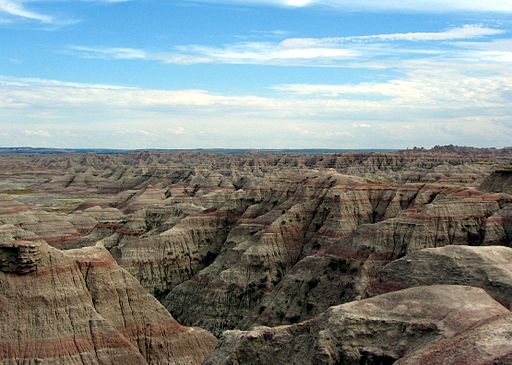
Planting trees for—or, more accurately, against—Trump and his policies is a great idea. We know that it’s not going to solve the problem of climate change, although every tree helps a little, and if we plant enough trees they will have a significant effect. But, perhaps just as important in the short term, every little gesture against the awful Donald contributes to the tide of protest by millions of people saying “we will not accept the attitudes of this president and we will not go along with his agenda."
Continue reading the full post here.
—Joe Landsberg and Richard Waring, Forests in Our Changing World
I suggest creating an online platform where everyone who voted for Hillary (all 68 million of them) can sign up and pledge to give 1 cent—which would be automatically deducted from their bank accounts (if they have one)—every time Trump tweets. This money would then go to combating climate change denial organizations/agendas, which are (demonstrably) incredibly well-funded.
If even half of everyone who voted for Hillary did this, we could generate $3.4 million in one day alone. (34 million votes equals 34 million cents multiplied by 10—the amount of times he tweets daily, on average.) The environmental cause he donates to could change every day. Even changing the monetary amount to half or a quarter of a cent for every tweet would still generate a lot of money.”
—Michael Carolan, No One Eats Alone
The best way to offset the environmental impacts of the Trump administration is to advance smart policy at the state level and be prepared to do the same at the federal level once Trump leaves office… or if he changes his mind while in office! I am very worried that the GOP’s “Obamacare repeal” moment will be repeated in climate policy in a few years, and I speak from experience: 2016’s pioneering I-732 carbon tax ballot measure campaign in Washington State (which I founded and co-chaired) lost in part because of opposition from the “environmental left,” including the Sierra Club and Washington Conservation Voters. The same dynamic played out in California earlier this year, with the Sierra Club and 350.org opposing the extension of California’s cap-and-trade system.
And you can watch it happening again in Washington State as the groups that splintered with the grassroots I-732 campaign are now splintering with each other about a 2018 ballot measure. So: If you’re on the right side of the political spectrum then there’s lots of work to do getting conservatives to pay attention to the risks of climate change (Bob Inglis and his compatriots at RepublicEn are one great resource), and if you’re on the left, well, as the Washington Post editorial board put it, “The left’s opposition to a carbon tax shows there’s something deeply wrong with the left.” Fix it.
—Yoram Bauman, Cartoon Introduction to Climate Change
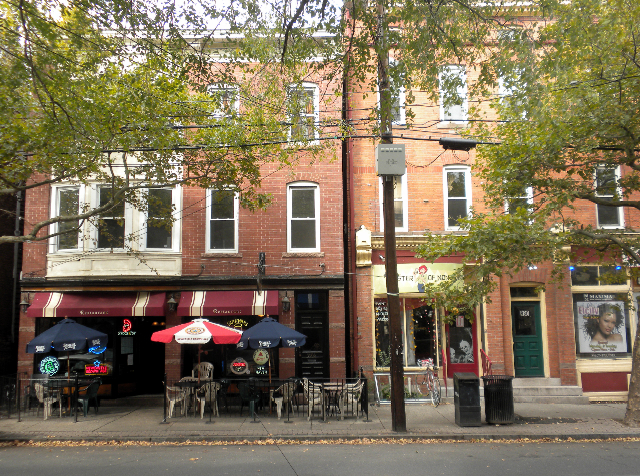
A good place to plant many of those trees is along the streets of America’s cities, towns, and villages. It’s been shown again and again that a canopy of street trees can significantly lower the air temperature of a block or a neighborhood or a larger area during the height of summer. That makes for more comfortable living. It reduces the need for air conditioning. It encourages people to walk or bike to nearby destinations rather than drive a car. Moreover, street trees make a place more beautiful. They persuade people—at least some people—that living in a somewhat dense neighborhood is not a sacrifice—it’s an advantage.
Along with planting trees, we should put more emphasis on making the street network safer for pedestrians. Especially important is what happens at intersections, the most dangerous parts of the street network. Some intersections need to be narrowed, to get motorists to slow down and to reduce the distance that pedestrians have to cross. On long or especially busy blocks, segments of the planter strips could be extended into the street, causing vehicles to move at a more reasonable speed and helping people to cross the street safely.
Follow examples from cities like Portland, Oregon, where centers of many neighborhood intersections have been planted, moderating the speeds on residential streets. In front of some neighborhood shops, encourage merchants to create patios where people can come together, eat and drink, and get to know one another. On Orange Street in the East Rock section of New Haven, Connecticut, where small stores are interspersed among houses and apartment buildings, patios of this sort have been created, giving the neighborhood a more congenial atmosphere than previously existed.
Making a greener, more beautiful, more sociable environment benefits people in many different ways.
—Phil Langdon, Within Walking Distance
There's no lack necessary actions we can take. But where to start? Or perhaps better asked: How can I channel my outrage into something that's constructive but also as satisfying as ripping out part of my sink? (After all, outrage is an itch best scratched soon lest you turn into a humorless crank.)
Seed-bombing Trump golf courses with wildflowers and edibles immediately comes to mind, though admittedly that ranks high on "satisfying" and not much else. Punching literal Nazis on the street is constructive, in a way, though it's not a skill I currently possess. Keeping up with my curated Twitter roster of political and environmental experts is more important than it sometimes feels (especially when the underrated Sarah Kendzior has a new post) but it's also far from satisfying.
Of course, anything that makes a whit of difference is generally going to be neither easy nor quick. Meaningful changes take time, time spent in setting intention, executing action, and curating results. I think this holds true whether you're raising a garden, starting an activist organization, or making a footprint-reducing lifestyle change.
Continue reading the full post here.
—Daniel Lerch, Community Resilience Reader
Unlike most annual crops, the roots of long-lived trees can penetrate through soils to great depth to reach water (Figure 1). If we can’t tell how deeply roots penetrate, how do we determine when trees run out of water? One way is to monitor the moisture status of leaves and twigs, because these are connected through the sapwood in branches, stems, and roots to water deep underground. Water in the tree’s conducting system is under tension; when a molecule evaporates from pores in the leaves, another molecule moves upward to maintain the integrity of the water column. The tension on the column during a typical clear day is often equivalent to a tension of 15 atmospheres (14.7 pounds per square inch) or more. At night, when dew accumulates on the foliage and there is no transpiration, the tension on the water column falls to as low at 1 atmosphere when water is readily available to the roots. Similar values would be recorded during a foggy day. As water is depleted from the soil, tension in tree’s vascular system increases, sometimes exceeding values of 40 atmospheres. Such high values result in breakage of the water column that can, if maintained for long, kill trees.

Collecting twigs from tall trees at night is a dangerous job. A shotgun loaded with buckshot is handy for sampling, although ones shoulder suffers (Fig. 2). Once a twig is severed, the tension is released on the water column. To determine how much tension the water column was under, the twig is inserted through a rubber stopper into a pressurized chamber, and the value recorded that is necessary to force water upward to the cut surface (Fig. 3). Before the effects of climate change became obvious, forest vegetation in arid parts of the western U.S. separated along defined water-stress gradient with native oak woodland at one extreme and subalpine forests at the other (Waring and Cleary 1967).


Since 2000, much of the forests in the western U.S. has experienced prolonged drought. Process-based forest growth models have been used to predict areas where trees might be expected to succumb to drought (Fig. 4) and aircraft carrying sophisticated remote sensing gear have confirmed the cumulative effects of sustained drought (Fig. 5). With the combination of modeling and ever-improving remote sensing tools, we have reached the stage where danger from wild fires can be predicted with increasing accuracy. The extent that damage from wildfires can be reduced by thinning stands of trees and through fuel reduction will soon be analyzed using these methods.
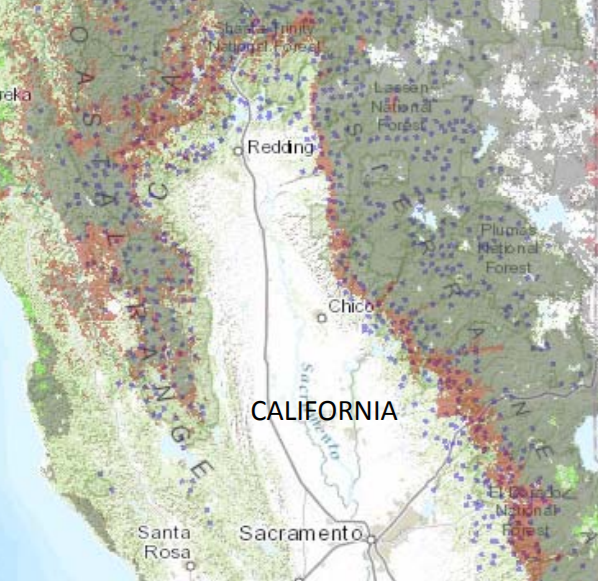

References
Asner, G.P., P.G. Brodrick, C.B. Anderson, N. Vaughn, D.E. Knapp, and R.E. Martin. Progressive forest canopy water loss during the 2012-2015 California drought. Proc. Nat. Academy Sci. Dec. 28, 2015: E 249-E255.
Waring, R.H., Coops, N.C. 2016. Predicting large wildfires across western North America by modeling seasonal variation in soil water balance. Climatic Change 135:325–339.
Waring, R.H. and B.D. Cleary. 1967. Plant moisture stress: Evaluation by pressure bomb. Science 155:1248-1254.
Recent climate marches have captured our collective attention. Students and young people around the world have taken to the streets to demand action on climate change now, in order to protect the environment for a better future. The impacts that we can already see are not the only climate impacts that will affect quality of life for future generations. Some climate dangers have yet to materialize. We turned to some of our authors to find out—What do they think will be the most pressing climate change issue in the next 50 years? Why?
The most pressing climate change issue will be our capacity to provide adequate nutrition and water to every person on Earth. This is a challenge we already struggle with and climate change will increasingly cause droughts and extreme weather events. Both our water sources and agricultural production are sensitive to these climatic shifts. Potential future food and water shortages will lead to increased global unrest and political tensions. However, we can take steps today to prevent these future shortages by developing sustainable adaptation strategies. Our greatest strength as humans is our capacity to innovate, and if we do so carefully and responsibly we'll be able to prevent many of these future crises.
-Jessica Eise, author of How to Feed the World
Clearly, the most pressing climate issue is figuring out how to get the global economy to carbon neutrality, and then developing the technologies for economically taking large amounts of carbon out of the atmosphere. But another critical issue that is not yet really being addressed is how we get in place national and international regimes to manage massive human migrations that will be driven by climate change. Regardless of the success that the global community has in implementing deep greenhouse gas reductions over the coming decades, we already know that anticipated future climate impacts will eventually cause large-scale migration of populations away from areas that are threatened by climate risks such as sea level rise, extreme heat, extreme storms, drought and wildfires, and towards areas of lower risk. The timing and geographic distribution of these movements is highly uncertain. They will, however, have a large impact on both the areas that lose population and the areas that gain population. And they will cause substantial economic, social, and political turbulence. As one commentator noted: "You can set up a wall to try to contain 10,000 and 20,000 and one million people, but not 10 million." How will we manage this climate migration? What legal status will the migrants have? How do we prepare the areas that are losing population, as well as those that are likely to find themselves with large unplanned in-migrations? It is time to start digging into these questions.
-John Cleveland, author of Life After Carbon
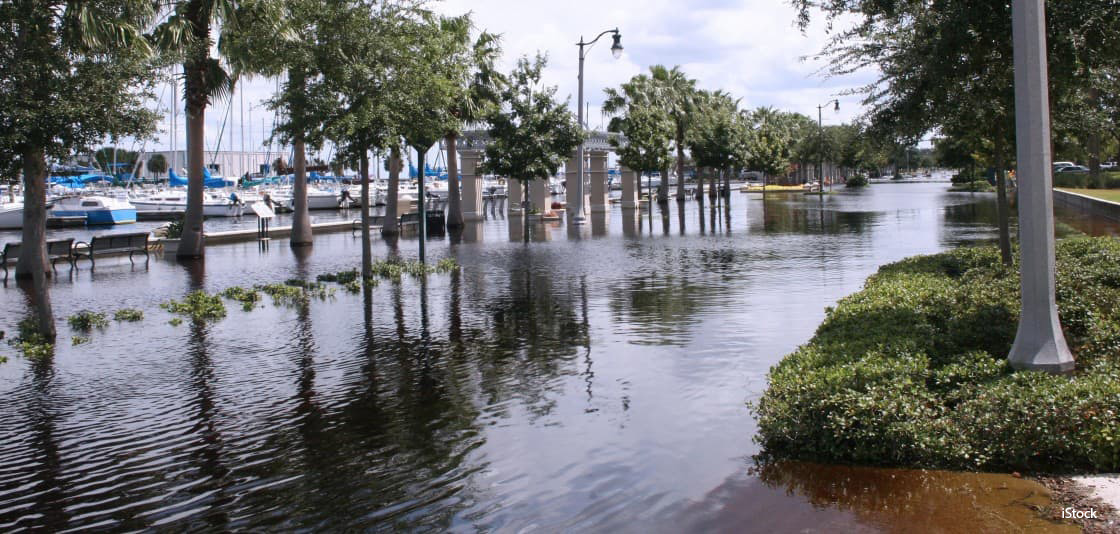
In my view, the largest threat to Earth in the decades to come will be unsustainable human population growth. This will trigger all kinds of irreversible environmental change. A smaller human footprint means first of all fewer feet.
-Michiel Roscam Abbing, author of Plastic Soup
Most scientists agree that climate change will increase the occurrence, intensity, and duration of extreme weather events, including flooding, hurricanes, droughts, heat waves, and wildfires. If we don’t do anything about this, most cities will become less comfortable—some by a lot. Depending on their location, cities and their inhabitants could suffer from the following possible scenarios: too wet, too dry, or too warm. Homes could be flooded on a regular basis, water faucets could stop flowing, or people’s lives could be confined to air-conditioned interiors because outside will be too hot. Fortunately, architects and city planners can help increase urban resilience—the ability of urban communities to bounce back from shock. If we do it right, we can even think of this as an opportunity to improve our cities and buildings. Dikes could double as flood protection and functional buildings, native species and drought tolerant plants can save water used for landscaping, and trees and plants can help cool down urban spaces. The future has always been uncertain, but our future may be even more uncertain. With climate change impacting our cities in unpredictable ways, the big question is: how do we design with these new risks?
-Stefan Al, author of Adapting Cities to Sea Level Rise
Climate change, as western U.S. water scholar Brad Udall frequently points out, is water change. What Udall means is that, even as we work toward reducing greenhouse gas emissions, we need to focus on reducing our vulnerability to changes even now being felt in the planet's hydrologic cycles. That can mean more water where we don't want it—think for example the flooding felt in the central United States from a freak storm in March 2019, or the creeping rise of sea level confronting our coastal cities. It often means less water where we've come to depend on it, like the shrinking reservoirs of the Colorado River Basin. Preparing for a future of water change is essential regardless of how successful we are in reducing our greenhouse gas footprint.
-John Fleck, author of Water is for Fighting Over
The transportation sector remains one of the largest contributors to greenhouse gas emissions, and thus represents the lowest-hanging fruit for governments looking to meet difficult carbon-reduction targets. Through our research, we've found that the Netherlands provides the best example of a clear path forward. A 2014 World Bank report ranked it in the bottom 25 nations for transport-related carbon dioxide emissions (as a percentage of total national production). In fact, Dutch transportation contributes just a fifth of their overall emissions, compared to a third in the United States, which—with 1.9 billion tons of CO2 emissions in 2016—overtook power generation as the most-polluting sector in the country for the first time in 40 years. Rather than wait for the electric car to save us, we should be looking to the humble bicycle, which—with the right infrastructure and policies in place—could immediately replace a significant number of trips we take by car, and begin moving us in a more sustainable direction for the future of our planet and our children.
-Chris and Melissa Bruntlett, co-authors of Building the Cycling City
The most pressing issue in relation to climate change is almost certainly the preservation and, if possible, extension of forest cover. Obviously, we must work toward reducing carbon emissions and increasing the adoption of renewable energy, but even the most optimistic scenarios around that would not solve the problem. Forests, and the oceans, provide the greatest sinks for CO2; we can fight to maintain oceanic biosphere and health, but we could—at least conceptually—increase the area of forests. And we MUST try to halt forest destruction.
-Joe Landsberg, co-author of Forests in Our Changing World

Society will not only need to prepare for current and impending changes due to climate change, we will need to do this while taking drastic action to avoid catastrophic consequences in the future. Many cities are vulnerable and dealing with the effects of climate change already. Forty percent of the United States’ population lives on 10% of its land mass—along coastlines. While cities have the power to make a greater impact on how we prepare for climate change, future planning and growth needs to be coordinated, thoughtful, and innovative. To start, policymakers should embrace and champion policies that encourage walkable, urban places and associated density—particularly in suburbs. Walkable, urban places create the opportunity for a lower carbon footprint, while contributing to a better quality of life for residents.
-Jason Beske, co-author of Suburban Remix
While the costs of adapting to climate change will be historic—in the US exceeding in real dollar terms the costs of fighting World War II and building the interstate highway system combined—the costs of inaction will be catastrophic. The UK’s National Oceanographic Centre (NOC) estimates annual global costs of climate-driven flooding, only one of multiple climate change impacts, at more than US$14 trillion. The NOC also projects that more than six hundred million people could be displaced by rising seas alone by 2100. In the US, seven of the ten most economically productive metros—representing roughly one-quarter of the entire economy and growing 50% faster than the US as a whole—face serious risks from rising sea levels.
Yet a blinders-on, single-issue focus on resiliency can mean falling into an all-too-familiar priority trap that pulls resources away from other compelling challenges. For example, the developed world is rapidly aging. People over the age of 65 will represent more than half of America’s (and the developed world’s) net growth for at least the next two decades—placing extraordinary stresses on healthcare costs that are projected to eat up all discretionary US federal spending by 2050. Growing income disparities in the US and across the developed world, accelerated by the shift to a knowledge economy that delivers most of its economic benefits to the better-educated top 20% of the workforce, are generating growing social as well as economic strains. Rapidly evolving technology means that within two decades the US and rest of the developed world will need to retool trillions of dollars in transportation infrastructure to adapt to autonomous mobility while at the same time responding to automation’s projected evisceration of the jobs of tens of millions of workers in the US alone. Nor can government stop funding transit, parks, and education—without facing grave social unrest and economic decline. And already today the developed world faces an enormous bill for fixing existing infrastructure—a figure that in the US will reach US$2 trillion, or almost 10% of the entire US economy, by the late 2020s.
Despite doubts expressed by US political leaders, the real question is not should we react to climate change, but how? The sheer enormity of the threat compels action. But how do we avoid the priority trap? My own experience planning for New Orleans’ recovery from Hurricane Katrina suggests three strategies: public private partnerships that unleash the innovation potential of the private sector, institutions and government working together; adopting the principles the Dutch originated following World War II—any resources spent on protection from rising seas or other climate forces need to also address livability, economic competitiveness, and wellness; and the time
-David Dixon, co-author of Suburban Remix
I just returned from Sweden where it’s all about climate change. The government is planting trees around the world, as well as working hard to reduce Sweden’s carbon footprint. Recycling options are everywhere. At the university where I spoke there are only washable dishes, cups, silverware in the cafeteria and break rooms. Everyone over four years old rides a bike, and those under four are in contraptions attached to an adult’s bike. Greta, the 16-year-old Swedish climate change activist, is inspiring us all with her courage and passion. For me the key question in tackling climate change is: Will we be willing and able to follow and support the youthful leadership taking on the challenge? It’s easy to write off the younger generation as inexperienced, whimsical, lost in their devices. That is old-fashioned and destructive thinking. These young activists are on the frontline of climate change, and we need to put our faith—as well as our money, influence and energy—in their leadership.
-Lucy Moore, author of Common Ground on Hostile Turf
Creating extensive ecological networks consisting of well-connected, large protected areas is most pressing priority because it is our best option to limit the extent of the sixth mass extinction. Climate change is adding to and exacerbating other threats to biodiversity, such as habitat loss, invasive species, pollution, over-exploitation of natural resources, and environmental degradation. Ecological networks can reduce the impact of all stressors, promote population persistence, and allow species to adapt to climate change by moving to climatically suitable areas.
-Dr. Annika Keeley, co-author of Corridor Ecology, Second Edition
When we were growing up, we thought that the only really tall trees in the western U.S. were giant redwoods in northwestern California. It wasn’t until Richard moved to Oregon in the early 1960s that he discovered not only are redwoods exceptionally large, but that all the conifers (e.g., spruces, firs, cedars, hemlocks, and pines) grow taller and can live longer than their relatives elsewhere in the world (see Table 1). Most of the western portion of Oregon is located within the Pacific Northwest (PNW) region that extends from northwestern California all the way to southwestern Alaska (see Figure 1). There are other temperate regions in China, Europe, and the eastern United States with forests that contain conifers. But in those areas, conifers predominate only for a short while following the germination of their seed after a fire or other disturbances. Deciduous hardwood tree species, such as oak, maple, beech, and basswood, eventually replace most of the ‘pioneer’ conifers, except on sandy or rocky soils. It’s the opposite of what happens in the Pacific Northwest. Why is this? Over the last half century, forest scientists have discovered some of the reasons.

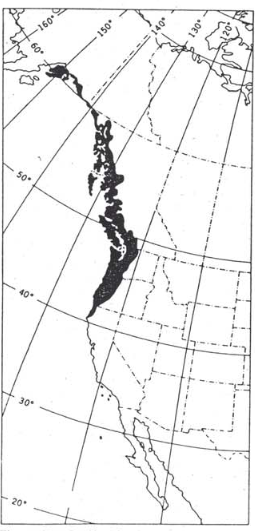
The seasonal pattern in rainfall differs between the PNW and other temperate regions (Figure 2). In the PNW, most of the precipitation falls during the winter months; the summer months are exceptionally dry (Figure 2A). Other temperate regions exhibit a more uniform pattern in the monthly distribution of precipitation (Figure 2B).
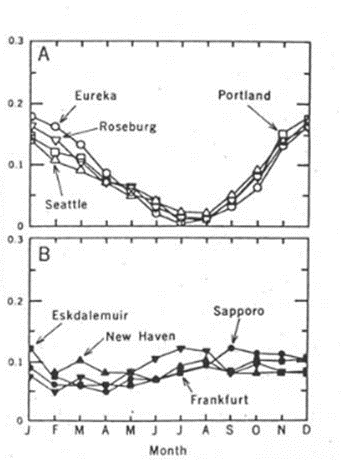
The nights are cooler during the growing season in the PNW because the Pacific Ocean provides a mass of cool air, often laden with fog, that moves inland up river drainages during the afternoon and evening. The impact of winter storms is limited to exposed areas along the coast; inland areas are protected behind a ridge of coastal mountains through which rivers twist through canyons on their way to the sea. Because hurricanes and tornados are extremely rare in the PNW, trees can grow much taller and persist much longer than in other temperate forests areas.
Most of the major tree species in the PNW evolved from shorter ancestors in China. As climatic conditions became more Mediterranean over thousands of years, PNW conifers evolved, growing taller and living longer than species of hardwoods with which they compete.
The needle-like foliage of conifers dissipates heat more efficiently than broad-leaf hardwoods during the hot, dry summers in the PNW. In addition, most conifers are evergreen, while most hardwoods are not. This enables conifers to photosynthesize, and therefore keep producing carbohydrates, throughout the mild winter months, as well as during the growing season. A final structural advantage of PNW conifers is that they have thick bark for their size. This helps protect the living cells beneath the bark and prevents them from reaching lethal temperatures when wildfires burn through the forests, allowing the trees to survive and grow larger than hardwoods with thinner bark.
Forest scientists used to puzzle over how PNW conifers grow at a rapid rate for longer than they do elsewhere. The explanation is that they continue to produce copious amounts of new foliage longer than other related species. When foliage production is reduced, less leaf area is available to intercept light for photosynthesis and, hence, growth is reduced. If branches are not shed rapidly, they grow longer. The longer a branch grows, the more tortuous the path for water flow from the stem to the leaves. As temperature increases during the day, the flow of water to leaves slows, causing a reduction in photosynthesis as pores (stomata) on the surface of leaves begin to close. PNW conifers continue to produce more leaves and fewer branches decades longer than related species in other temperate forests. The ability to produce and sustain dense canopies of leaves explains why Pacific Northwest forests, when left undisturbed, accumulate more than twice as much standing biomass and stores of carbon than any other forests on earth.
Dense PNW forests use a lot of water, as much as 5 millimeters (0.2 inches) a day or nearly 6 inches per month in warm dry conditions. With a warmer climate, and their large amount of retained foliage, these forests attain maximum rates of transpiration earlier in the spring. At lower elevations, this results in an increase in soil water deficits that cause trees of all sizes to become more stressed physiologically than they were previously. Mega-wildfires are more frequent and more destructive than the historical norm.
At higher elevations in the Cascade Mountains, less snow accumulates now than in years past, and it melts more quickly in the spring. This means that even the subalpine forests, which evolved with infrequent fire, are susceptible. With continual warming, we may lose the iconic giant conifer trees of the PNW region, along with the carbon they stored in their massive stems, which would be an irreversible loss, analogous to the melting of glaciers because both require such long periods to form.
We thank Lise Waring for insightful comments on an earlier draft.
Waring, R.H. 1982. Land of the giant conifers. Natural History 91:54-63.pdf
